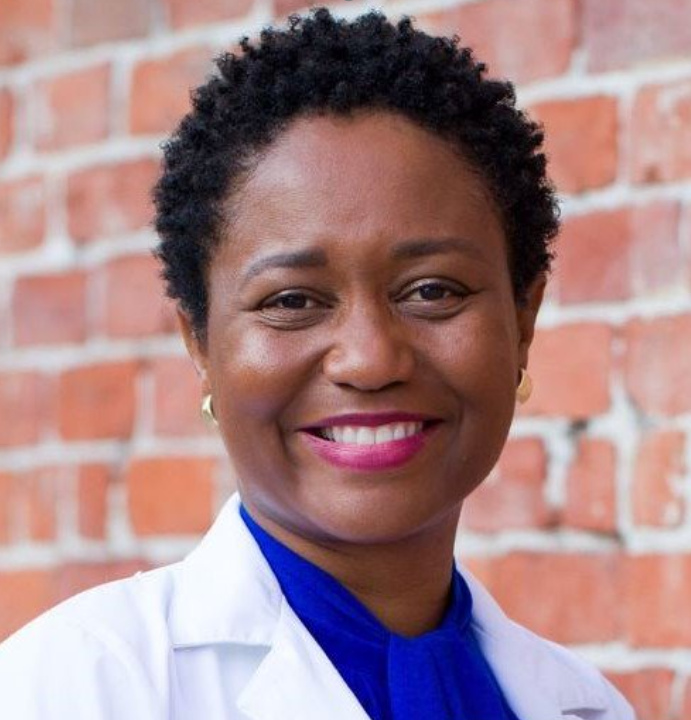Practicing HOPE in Trauma-Informed Care

Adwoa Osei, MD, FAAP
April 26, 2024
I had just come out of the room with a family dealing with a new diagnosis of autism for their child. The family before them was piecing together the limited resources available for behavioral health. It was 10 a.m. and I was already behind in my clinic schedule. I saw I had two siblings in the next room for routine well-child visits. This was our first encounter. "Hello," I greeted, and before I could even introduce myself, the 4-year-old asked, "What's your name?" Her 6-year-old brother followed with, "Why do you have so many flowers on your dress?" Then came the inevitable concern, "Are we going to get shots?" All of this happened as they climbed onto the examining table and began to retrieve toys from their parent’s bag to show me. This curiosity and wonder from them are why I chose pediatrics.
As the visit progressed, and I delved deeper into our routine social determinants of health needs assessment, I found out that one parent is in treatment for a substance use disorder. Additionally, the family was navigating significant changes: moving homes, living with relatives, financial strains, and the transitions of starting school and daycare, all while the parent present at the visit tackled a new job with long hours.
Throughout the visit, I observed the comforting hugs from their parent, and a short gratitude practice initiated by the parent, with the children saying, "Thank you, Dr. O, for being my doctor today." They also responded well to repeated but firm, gentle redirection from their parent. At one point, the parent asked for a brief pause during the visit to practice five breaths with their daughter as the child started to hit her brother.
As pediatricians partnering with caregivers to optimize the flourishing and thriving of children, it can seem daunting when a family is faced with layered challenges and traumatic experiences. A growing body of research highlights the critical role of early relational health in building resilience in children and protecting them from the harmful effects of trauma and adversity. By fostering positive, supportive relationships in early childhood, we can help buffer against toxic stress and promote positive childhood experiences, setting the stage for a lifetime of well-being and resilience.
In my practice of trauma-informed care and relational health, I focus on “building and promoting buffering” with my families. The practice of H.O.P.E, as I have come to call it, builds on elements that foster positive childhood experiences.
Healing: Creating a Safe, Trusting, and Nurturing Space
From the moment I greeted that last family, I was committed to fostering an environment of safety, belonging, and play. Simple acts like taking the time to listen to stories about their toys, telling them about the flowers on my dress, being truthful about “receiving shots” and adding, “we will be here to take care of you when it hurts,” and thanking the parent for bringing the children in for the visit were my way of ensuring they felt welcomed, seen, and valued right from the start.
Observing: Being Attentive and Practicing Active Listening
The children's spontaneous actions, from bringing toys to the exam table to the family's moment of gratitude, were rich with insights. Active listening for me goes beyond hearing their words; it is about observing their interactions, how they sought comfort from their parent, and their reactions to gentle guidance and breathing exercises. These observations helped me tailor my approach, making sure it aligned with their emotional and developmental needs.
Praising: Acknowledging Strengths and Fostering Resilience
I made sure to sprinkle our interaction with moments of praise, recognizing their curiosity, bravery about shots, and participation in the gratitude practice. When redirection was needed, I praised the parent’s short and specific directions given to the children. I acknowledged the children’s efforts, reinforcing a positive self-view and resilience needed for their adaptation to new circumstances. I praised their self-efficacy in completing five breaths when faced with overwhelming emotions and for partnering with me through the visit. By doing these, I hoped to model a strength-focused approach in my interaction with the children for their parent.
Encouraging: Fostering a Sense of Belief in Possibilities and Potential
From celebrating their ability to manage emotions with deep breaths to reassuring them of their capacity to handle the day's challenges, I aimed to bolster their sense of empowerment. Validating their feelings and supporting their coping strategies, like the family's breathing exercises and adjusting to living with relatives, demonstrated their ability to cope with change.
As the visit ended and we discussed community support services and trauma-focused therapy, I shared with the parent, all the ways they had demonstrated opportunities for positive childhood experiences through my practice of H.O.P.E. “I am so happy to be doing something right,” they said in response.
How do you promote opportunities for positive childhood experiences in your practice of pediatrics? How will you practice H.O.P.E today? If you are unsure, please take a page out of my playbook. The more we do this as pediatricians, the better our patients will be.
*The views expressed in this article are those of the author, and not necessarily those of the American Academy of Pediatrics.
About the Author
Adwoa Osei, MD, FAAP
Adwoa Osei, MD, FAAP, is a health sciences associate professor of Pediatrics at the University of California School of Medicine. Dr. Osei leads teams in the creation of innovative, inclusive and community empowered, trauma informed approaches in advancing health equity. She is program director for UCR PRIME Leadership Education to Advance Diversity and co-director for the Health Equity, Social Justice, Anti-Racism (HESJAR) curriculum. She develops curricula for and serves as a subject matter expert for the American Medical Association, the AAP, and the National Academies of Science and Engineering on trauma informed care, mental and behavioral health.